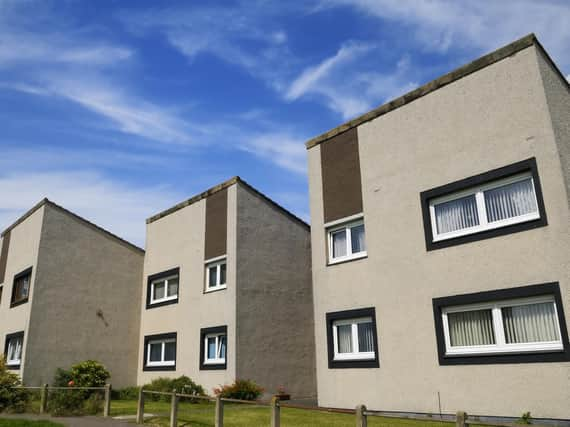Data reveals profits made on former council houses


And more than 80 properties in the county landed the owner a profit of more than £50,000 in real terms since the year 2000, the data shows.
Right to Buy (RtB), which offers large discounts to council tenants who buy their home, has been one of the most divisive housing policies of the past 40 years since its introduction by then Prime Minister Margaret Thatcher in 1980.
Advertisement
Hide AdAdvertisement
Hide AdSupporters say it has given millions of people the chance to get on the housing ladder, but opponents blame the policy for distorting the housing market and a huge reduction in the amount of social-housing stock.
The BBC’s Shared Data Unit has compiled the most comprehensive dataset of sales of ex-RtB homes from the year 2000 to April 2018, which total a combined profit across Great Britain of £6.4billion.
The largest profit in Northumberland during this period was on a property bought under RtB for £139,500 in December 2002 before being sold on for £307,000 in January 2006, a difference of £167,500 – which becomes £150,160 when adjusted for inflation.
With three years between the two sales, this works out as a profit of £150 a day.
Advertisement
Hide AdAdvertisement
Hide AdThe highest profit per day figure in Northumberland was £887, after a council house was bought under RtB in June 2005 for £22,880 then sold for £77,000 in August the same year, a profit of £54,210 in just two months.
By contrast with the scores of RtB homes which secured a profit for their owners when sold on between 2000 and April 2018, just 18 made a real-terms loss, the majority being less than £15,000 although one took a hit of £91,268. Just five were sold at an actual loss.
Across the county, from the 234 comparable sales, the average real-terms profit was £36,046, with the average profit per day being £19. On average, RtB homes were owned for 2,763 days before being sold on.
These Northumberland averages place the county towards the bottom of the national list with the top 25 local authorities for the highest average real-terms profit unsurprisingly being in London or surrounding areas.
Advertisement
Hide AdAdvertisement
Hide AdIn the North East, there are 2,830 sales where the RtB and subsequent sale price are available to compare and the total profit made on those properties was £135million, or £116million in real terms.
The average amount of money a vendor made between purchase and sale was £20 per day, with just 53 (1.9%) making a loss and 188 (6.6%) making a real-terms loss. RtB homes were kept for an average of 2,710 days (7.4 years) in the region.
Housing Minister Kit Malthouse said: “Under Right to Buy, the Government has helped nearly two million people achieve their dream of home ownership and we are working hard to make sure that everyone in the country who wants it has a shot at getting on the housing ladder.
“Tenants who use Right to Buy must repay some of their discount back to their council if they sell the property within the first five years and must offer their local authority the opportunity to buy it back.”
Advertisement
Hide AdAdvertisement
Hide AdToday, homeowners receive a 35 per cent discount if they have been a public-sector tenant for between three and five years. After five years, the discount increases one per cent for each extra year of tenancy, up to a maximum of 70 per cent – or £80,900 across England and £108,000 in London boroughs (whichever is lower).
Tenants who exercise their Right to Buy must repay a portion of their discount to their council if they sell within the first five years. The discount repayment is based on the resale price and ranges from 100 per cent in the first year to 20 per cent in the fifth year. In addition, tenants who wish to sell their property within 10 years of purchase must offer their local authority first refusal to buy it back.
But Paul Dossett, head of local government at financial services firm Grant Thornton UK LLP, said: “The Right-to-Buy scheme has been a disaster for the UK taxpayer.
“Not only have they ended up getting less value for taxpayer-funded assets, the subsequent shortage of social housing has resulted in a hike in rent prices which, when the tenant is a recipient of housing benefit, is also funded by the taxpayer.
Advertisement
Hide AdAdvertisement
Hide Ad“Councils have been forced to buy back homes at a significantly-inflated price to try to meet demand – a financial disaster for councils who are already struggling to remain financially sustainable.”
Ben O'Connell, Local Democracy Reporting Service